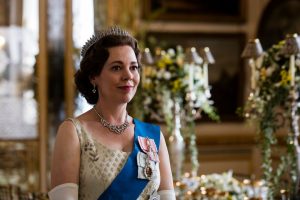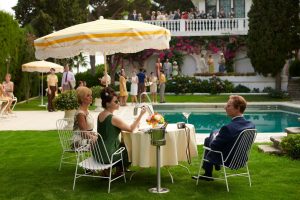“History was not made by those who did nothing.”
Monarchist or republican, we all must agree that Queen Elizabeth II at 93 has experienced a lot of major events in her lifetime. The Crown Season 3 now starring Olivia Colman as Queen Elizabeth II continues to chronicle them by decade. Focusing on the late 1960s to the late 70s, The Crown Season 3 features 10 binge-worthy episodes that is now available on Netflix to stream.
In royal life alone the Queen has seen two coronations (one being her own), one abdication, three royal state funerals, 14 UK Prime Ministers, 12 US Presidents and a host of other world leaders – from Adolf Hitler to Idi Amin, Mahatma Gandhi and Angela Merkel.
Her experiences have been from a position of privilege and perhaps, in hindsight, she may have played part of her role differently.
The Crown was conceived by Peter Morgan, writer of the 2010 play The Audience which outlines the relationship between the Queen with Prime Ministers from Churchill to Wilson, Thatcher, Blair and all those in between. It’s a great piece of history, reminding those of us who were there of some of the important events during her reign and giving those of us who weren’t a snapshot of historical events. I, for one, have felt compelled to research events that I was not around for.

The Crown Season 3. Photographed by Sophie Mutevelian. Image via Netflix Media Center
The Welsh mining tragedy at Aberfan (seen in Episode 3: Aberfan) was a terrible incident which, more than 50 years later, is still felt by the survivors of the town and those in the vicinity. The Queen herself has said it is the one incident she is still affected by.
The effects of the abdication of Edward VIII (Episode 8: Dangling Man) are also still felt by the royals 50 years later. The younger generation, including Charles, is sympathetic for the man he feels was ostracised for his humanity and free spirit. For the older generation to whom he caused so much grief and who remember his treachery to his country through his friendship with Hitler and his cronies, there is no forgiveness.
However, in their behaviour the royals are firm and they have to stay together. This series illustrates the royals’ constant struggle between maintaining an aura of mystery which people expect of a monarchy, and being real. While we need our royals to be somewhat better than those around us, we also want them to show a human side – we like to see some empathetic acknowledgement to what their subjects are feeling. It’s a contradiction and must be difficult to manage well.
- The Crown Season 3. Photographed by Des Willie. Image via Netflix Media Center
- The Crown Season 3. Photographed by Sophie Mutevelian. Image via Netflix Media Center
Each royal is given a viewpoint in the series. Princess Margaret is seen as the would-be Queen (Episode 2: Margaretology); the woman with the personality and confidence to enjoy the position. This leads to the question of whether we want a monarch to think for themselves and have a strong personality. Do we want someone responsible, dependable and reliable or someone who is passionate with independent thoughts?
In this season, cast members have changed to reflect the Queen moving into middle age, including Colman as the Queen (successful at playing queens as shown by her Best Actress Oscar for her turn as Queen Anne in The Favourite last year), Tobias Menzies (Prince Philip), Helena Bonham-Carter (Princess Margaret), Ben Daniels (Antony Armstrong-Jones) and Charles Dance (Lord Mountbatten). All had shifted into more sober characters as they aged – the Queen is perhaps a little overdone in her serious outlook on life. There is some treat casting with Derek Jacobi appearing briefly as the Duke of Windsor, and Geraldine Chaplin as the Duchess of Windsor.
The Crown, in reality, has had to undergo so many shifts in public opinion and there have been many times when the position of the royals has been precarious. Inside Episode 2: Margaretology we see this when a good deed is performed – such as Margaret going to the US and securing a bailout from President Johnson. She returned to a hostile press questioning the value of her “holidaying” on the public purse.

The Crown Season 3. Photographed by Des Willie. Image via Netflix Media Center
And now, as the series seems to be positive media for the royals, Prince Andrew disgraces himself in a BBC interview talking about his friendship with convicted paedophile Jeffrey Epstein. In some ways the royal foibles make them more human, but again, is this what we really want to admire in those holding those positions of privilege?
Highlight episodes include those which introduce Prince Charles and his paramour Camilla Shand-Kidd (Episode 9: Imbroglio), and Princess Anne is also given an interesting turn here – one quite unexpected.
Princess Margaret meeting Roddy Llewellyn (Episode 10: Cri de Coeur) is another developing thread which one expects will ultimately come to a head in series four.
Also covered in this series was the Queen’s art curator Antony Blunt discovered but not outed immediately as a Russian spy. Princess Alice, Philip’s mother and granddaughter of Queen Victoria (Jane Lapotaire) made a brief appearance as another interesting character hidden in the palace.
Other highlights are the death of the Duke of Windsor, Prince Charles’ investiture as the Duke of Wales and the royal home movie which was shown on the BBC and then hidden for decades (it revealed the royals to be too ordinary, it seemed).
The Crown Season 3 ends in the late 1970s. Diana is still to appear, as well as Thatcher and the worst of the miners’ strike. We say bring it on and long live the Queen.
Feature image: The Crown Season 3. Photographed by Sophie Mutevelian. Image via Netflix Media Center




